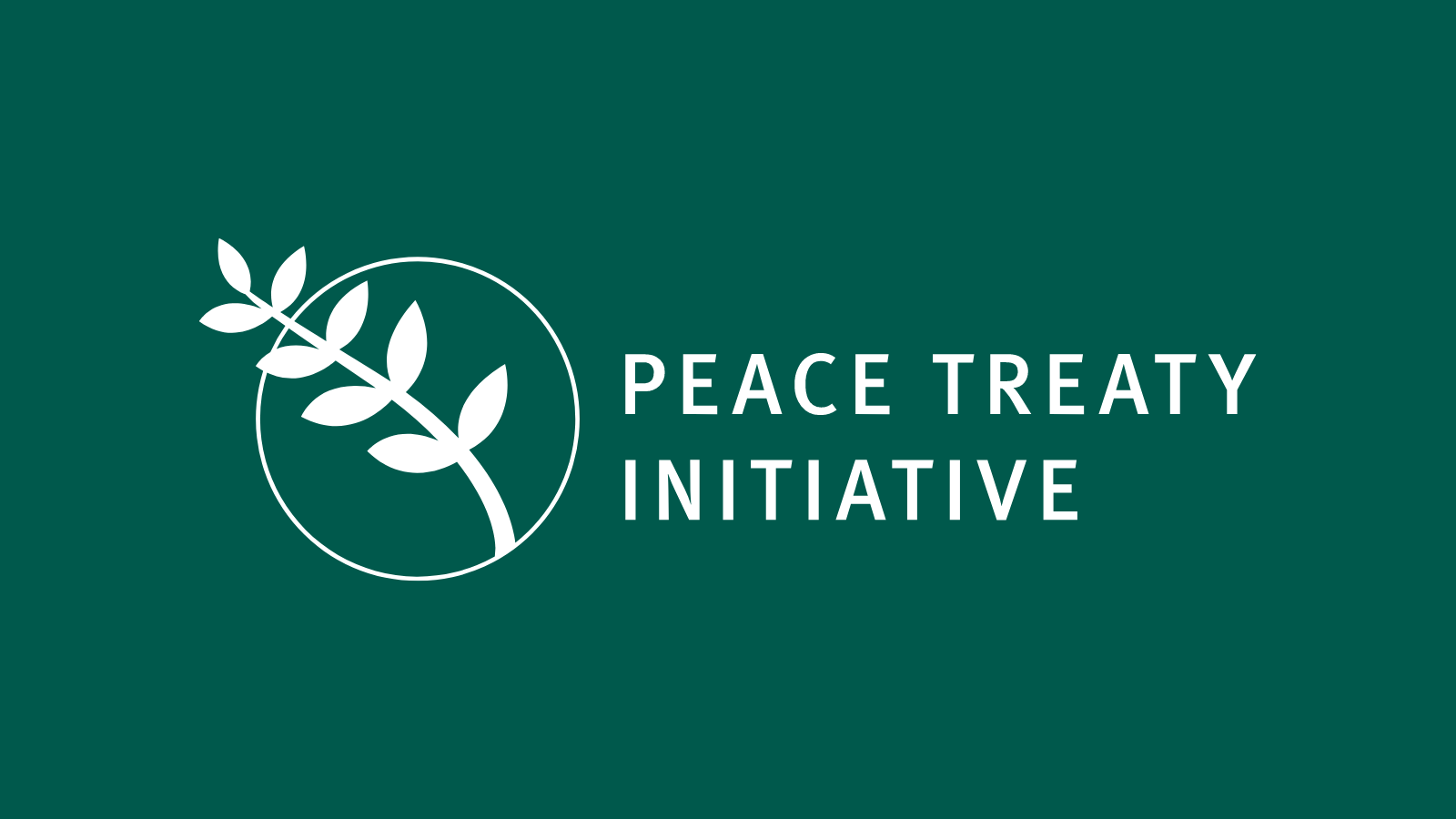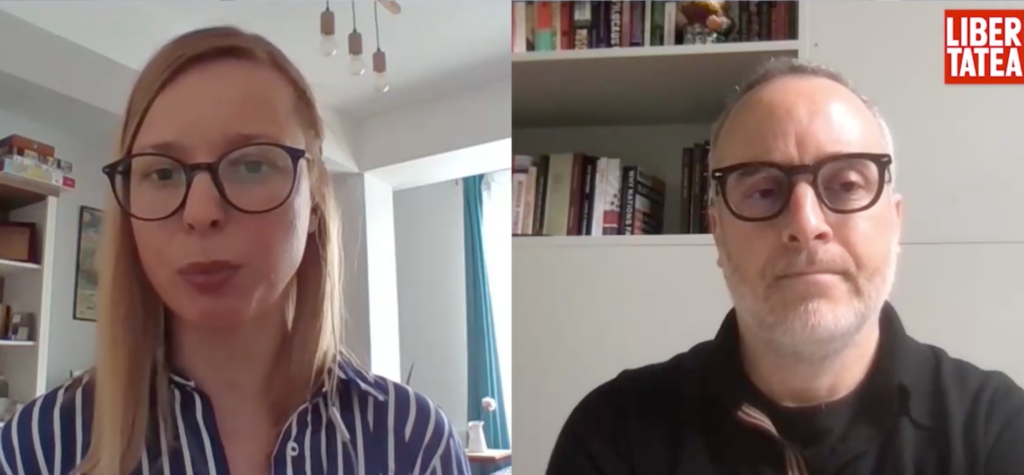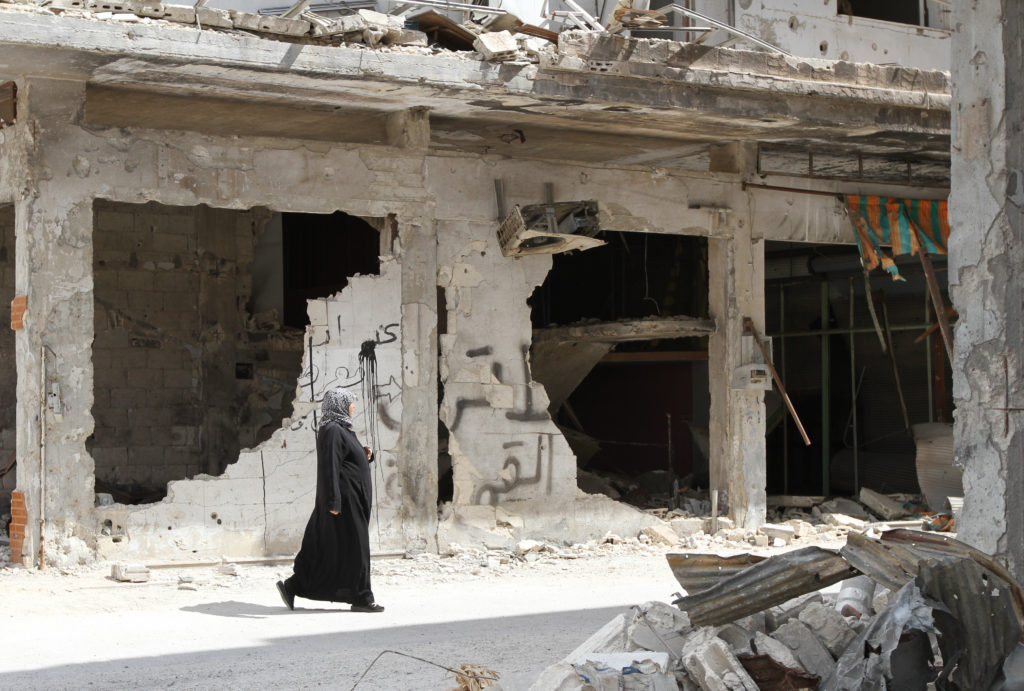Public Commentary / 26 October 2021
Blog Symposium: Peace Treaty Initiative

In the Armed Groups and International Law blog’s Peace Treaty Symposium, IFIT’s Mark Freeman and international law experts Juana Acosta and Asli Ozcelik Olcay discuss the opportunities presented by the Peace Treaty Initiative and some of the main substantive elements of its indicative text. Among other things, they examine the value add of having a treaty as opposed to other tools of soft law; the contributions the new treaty would bring to the peace versus justice debate; and the opportunities it would provide for negotiators and mediators who continuously face legal and security risks.
Peace Treaty Symposium
By Mark Freeman
When it comes to conflict prevention and resolution, a critical gap in international law is holding us back as a global community. While there is international law to regulate armed conflict and war, no clear counterpart exists to encourage and support peace negotiations.
The Peace Treaty Initiative seeks to fill this gap by developing an international law of peace negotiation that would incentivise states to choose the path of dialogue when the prospect or reality of armed conflict arises. An indicative text (password: 2021-PTI) has been developed, offering a first glimpse of what the proposed treaty could look like. It is now the subject of a wide-ranging global consultation process.
Certain premises guide the text. For example, an underlying normative premise is that negotiation and dialogue are beneficial to societies. Understanding them as valuable and even critical tools for conflict prevention and resolution explains why this text deliberately seeks to make negotiation and dialogue more attractive to governments – as well as non-state armed groups – when faced with real or potential armed conflict.
A second premise is more pragmatic. The goal of the Peace Treaty Initiative is to bring a multilateral treaty into being – as opposed to a set of voluntary guidelines – in order to fill an essential gap in international law. This implies a drafting logic that is primarily sensitive to the needs and concerns of UN member states given that, without their buy-in, the treaty cannot materialise as law. At the same time, the perspective of non-state armed groups – the habitual counterparts of governments in peace talks – must also be anticipated.
A third premise informing the draft treaty is structural. Negotiation itself has intrinsic needs, constraints and limitations. Any new international law that seeks to bring about more recourse to negotiation, rather than less, must take these into account. For example, negotiation necessarily implies mutual concessions and difficult compromises; by definition, it is not a process in which one side can simply impose its will on the other. This logically militates in favour of a treaty that provides for tailored legal incentives, increased legal flexibility and greater legal clarity on key questions of international law that negotiators systematically encounter.
In that regard, the indicative text of the treaty sets out to offer targeted benefits for three key junctures of the negotiation process: the beginning, middle and end.
Negotiations for peace are hard to get underway. They involve very significant political risks and controversies for governments. They also involve a myriad of complex questions of policy and process design. As such, any international law seeking to make dialogue and negotiation more attractive must help to de-risk the foreseeable political costs and complications for any government that announces it will be sitting down with a sworn enemy that the population has come to fear or repudiate after years of war, vilification, and violence.
If and when a negotiation process has begun, a new set of needs arises. Negotiations are inherently iterative processes, with ups and downs, interruptions, crises and complications emerging throughout, in processes that often last for years. It is therefore important for any international law of peace negotiation to give them as much stability, support, and political and legal embedding as possible, so that at every juncture, the process has a higher chance of advancing to the next stage.
And if ultimately a peace deal is reached – a rare but often transcendental moment – the response of international law cannot be unknowable. To the contrary, if and when agreements arise, it is critical that they have as much legitimacy, stability, and recognition as possible, taking into account the most reasonable and objective readings of applicable international law.
In this regard, it is evident that the proposed new treaty on peace negotiation cannot undo existing international law, but must instead co-exist with it. This may, however, have diverse implications or meanings.
For example, where existing law is unclear, the new treaty can provide greater clarity (for example, around critical questions inside peace talks such as conditional amnesties for atrocity crimes). Where existing law lacks an institutional framework to ensure progressive and structured implementation, the new treaty can provide one (for example, by creating an advisory support unit; a conference of states parties; a secretariat; and state-level mechanisms to ensure national preparedness, education and training on negotiation and dialogue). And where existing law is absent, the treaty can create new definitions, norms and procedures (including a situation referral procedure; international privileges and immunities for mediators; a “presumption of conformity” with international law when peace deals meet certain minimal criteria; and a special provision allowing non-state armed groups to adopt negotiation and dialogue standards).
The first step, however, is for the treaty to exist – since without it, the identified gaps and limitations of current international law cannot be overcome, and the new and targeted incentives for negotiation cannot materialise.
The big question is: will a critical mass of UN member states take up this cause? The short answer is that they will, provided that the new international law of peace negotiation is conceived as a help and not a barrier to their national interests, offering more benefits than burdens, and with a global rather than Western perspective. That is why, among other things, the incipient global consultation process for the Peace Treaty Initiative is so important. Through it, governments as well as multilateral organisations, academia, faith-based entities, think tanks and NGOs from around the world will have the opportunity to provide political and technical input on the indicative text of the proposed treaty, through participation in regional and thematic workshops and high-level consultation events.
When all is said and done, we must admit that we are in an era of novel and growing kinds of armed conflict. In addition, new armed groups keep arising and shape-shifting in ways that endanger civilians in every part of the world and are harder to fit into our old archetypes. Moreover, when the fighting occurs, it is no longer on a well-marked battlefield with clear separation between combatants and civilians.
We need to face these and other hard realities of armed conflict with the most proven tool that history has provided: the tool of negotiation. It deserves all the protection and incentives that international law can offer; and it requires us to think beyond the existing laws of war to an imagined law of conflict prevention and resolution.
Originally published in Armed Groups and International Law.
The Peace Treaty Initiative: Facilitating the pathway of negotiation through international law
By Asli Ozcelik Olcay
October 27, 2021 – The Peace Treaty Initiative aims to fill a “critical gap in international law” by “developing an international law of peace negotiation”, as Mark Freeman explains in the introductory post of this symposium. This ‘gap’, i.e., the absence of an overarching international legal regime that governs peacemaking, has attracted significant attention in the last decade or so. As international policy instruments, such as the United Nation’s (UN) Guidance for Effective Mediation, increasingly situate the practice of peace negotiation and mediation within “within normative and legal frameworks” (2012, p.16), scholarly projects have advanced the notion that there is an emerging law of peacemaking (which is positioned partly or fully within international law depending on the project).
Read the complete article on Armed Groups and International Law.
Peace Treaty Symposium: A Reaction to Mark Freeman’s Post
By Juana Acosta
October 28, 2021 – I want to start by saying that I have always maintained that international law should be a tool rather than an obstacle to peace negotiations; particularly in a world where there are still more than 74 non-international armed conflicts across 25 countries. But if we look at international law today, this is not exactly the case. First, as Freeman points out in his post, there is no international law on negotiation as a means of preventing or ending non-international armed conflicts.
Read the complete article on Armed Groups and International Law.

Public Commentary
Interview with Mark Freeman in Libertatea: Negotiations between Russia and Ukraine

Public Commentary
Getting back to what matters: Victim voices and the making of international law

Public Commentary
Negotiating amnesties, peace and justice: a new path


